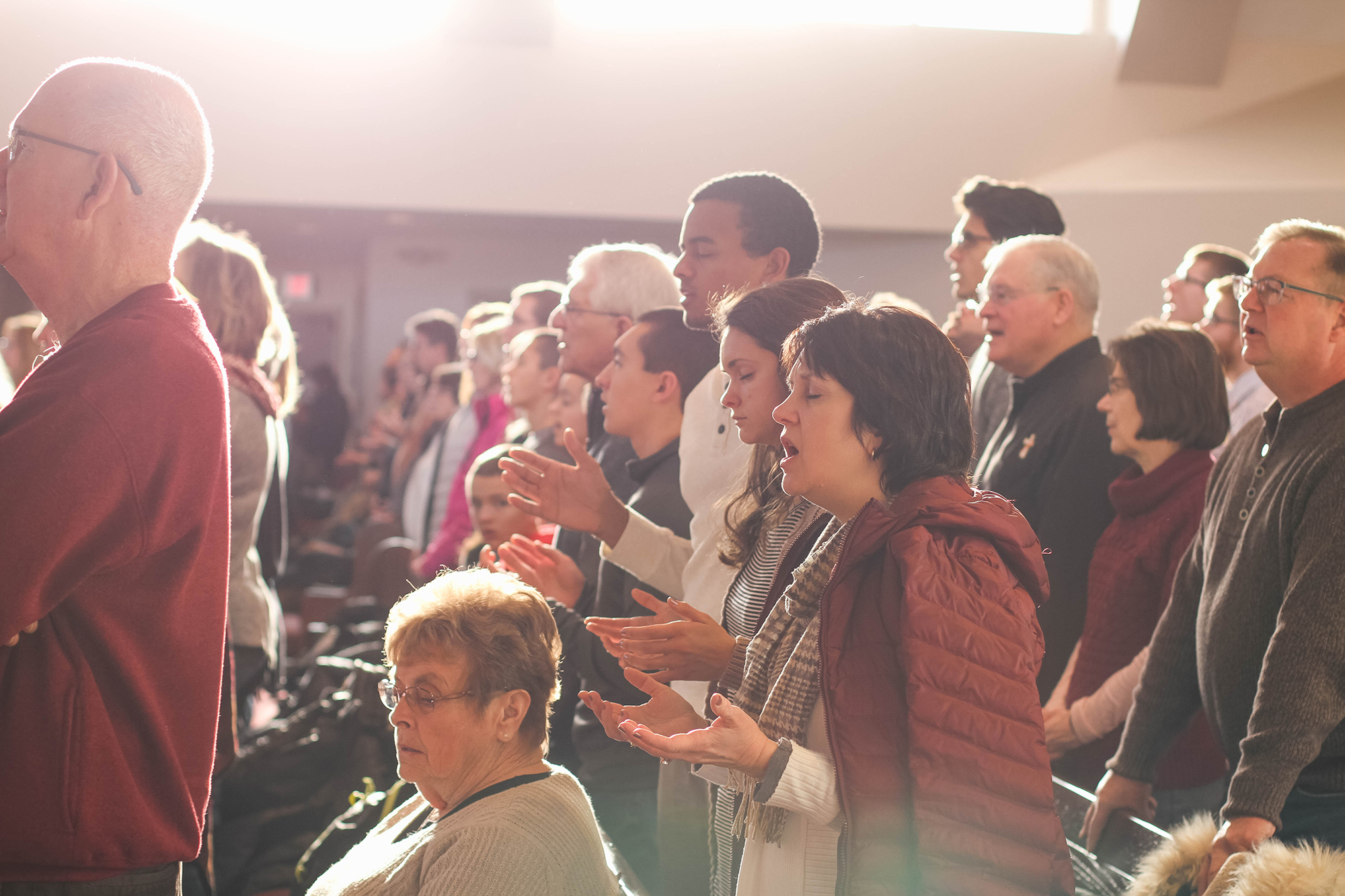What makes the church the church? What are its defining marks, the characteristics that set it apart? In this series of articles, pastor Tim Breen explains that the body of Christ is a community that obeys the Spirit, extends grace, embodies witness, and faces suffering.
Now in the church at Antioch there were prophets and teachers: Barnabas, Simeon who was called Niger, Lucius of Cyrene, Manaen a member of the court of Herod the ruler, and Saul. While they were worshiping the Lord and fasting, the Holy Spirit said, “Set apart for me Barnabas and Saul for the work to which I have called them.” Then after fasting and praying they laid their hands on them and sent them off.
Acts 13:1-3
How many kinds of churches are there?
In essence, there are three.
Sure, there are thousands of denominations, hundreds of theologies, and dozens of size cultures. But in the end, most congregations self-select into one of three categories. There are memorial churches, maintenance churches, and movement churches.
The Memorial Church
The memorial church operates under the assumption – stated or implied – that the church’s best days are in the past.
The memorial church is sincere and sober, an Ebenezer in the truest sense. Worship spaces are reverently frozen in time. Lionized former pastors hold vigil through life-sized paintings in the foyer. Various brass plates, etched with the names of bygone donors, serve as constant reminders of the largesse of the men and women of yesteryear.
The memorial church reflects fondly on a once-filled sanctuary (we used to have to set up folding chairs!) and believes that it would happen again if only the world will come to appreciate the Ways of Old. Members, doleful but dutiful, work to keep the torches of their cherished orthodoxies burning.
The Maintenance Church
The second kind of church is the maintenance church. Maintenance churches believe that things right now are as good as they’ll ever be. Serious reconsideration of ministry models is therefore discouraged as “trying to be someone we’re not” or “just change for change’s sake.”
Above all (and in lieu of felt-banner “Mission Statements”) maintenance churches work to keep congregants happy. The church’s ministry portfolio is a bill of goods, a set of conveyor-belted commodities for the members on the rolls. Worship is a production; service to the neighborhood is a way to feel good about oneself; ministry programs are means of rehearsing Christian values and keeping the kids from getting into too much trouble.
Surface-level updates like greeter lanyards and live-streaming provide just enough novelty to ward off boredom, but deep transformation is carefully sidestepped. Too much change would unduly jeopardize the kind of congregational contentment to which the maintenance church quietly aspires.
The Movement Church
The third kind of church is the movement church. The movement church is hallmarked by the firm conviction that her best days are still to come. An unquenchable passion for the kingdom on earth as it is in heaven propels the movement church forward.
Members of movement churches are always on the lookout for new and creative resources to help them live out their mission. They’re paying close attention to discern where the gospel might find new footholds in their culture. They’re preparing men and women from their ranks to live into consequential leadership roles.
Movement churches frequently find themselves in uncomfortable situations; what’s new is rarely safe and simple. It takes more faith—a deeper faith—to operate with emerging and ambiguous variables. But because movement churches are committed to Jesus, they relish this kind of frontier life.
Maintaining forward momentum in our congregations
While it’s beyond the scope of this piece to consider how it happens, it’s worth considering that most every congregation begins as a movement church. Everywhere used to be the frontier. For each congregation there was once a groundbreaking service, a leadership team, and a grand vision. Everybody at that ribbon-cutting was a pioneer.
But time passes, vision fades, and plenty of forward-thinking congregations recede from the bleeding edge of innovation to the warm gauze of familiarity and contentment.
The New Testament book of Acts, a window into the initial experience of Christian community, depicts the early church as a body in motion. In the book’s opening verses, Jesus sends his followers out as witnesses to Jerusalem, Judea, Samaria, and the ends of the earth (1:8).
As enticing as it must have been to settle down among Capernaum’s brass plaques, the believers had marching orders: keep moving.
There’s no doubt that Antioch could have been another friendly confine for maintenance Christianity. Everything was good there: a multicultural congregation, regular worship, fasting. This should have been the place where everybody was satisfied.
Except the Holy Spirit wasn’t satisfied. And the Spirit dared interrupt the church’s worship for a grander purpose: Barnabas and Saul couldn’t stay. There were frontiers to be explored. Change had to happen. Movement was expected.
Our mission is the same as theirs. Our Lord still sends. His church cannot grow stagnant. Perhaps, by better aligning ourselves to the ongoing work of the Spirit, we can realize new and forward momentum within the congregations that we love.
[This article is one in a series about the characteristics of the church. You can also read about the church being marked by grace.]



